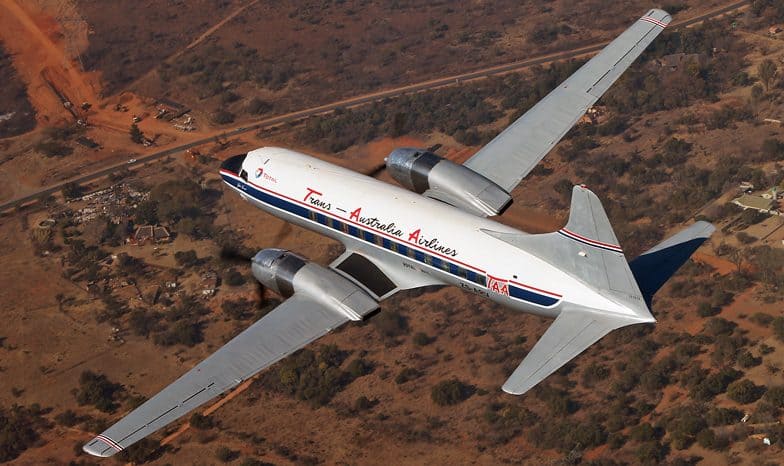Convair 440 (aka C-131)

History of VH-TAA
History of Type
The Convair 240 / 340 / 440 family of airliners was produced between 1947 and the mid 1950s as a successful attempt at a DC-3 replacement. It was the first twin engined, pressurised airliner. After a false start, the configuration of two R-2800 engines and 40 seats was settled on – hence the “240” as the model number. An interesting feature of the 240 series was the “air-stair” at the tail, similar to that which became normal on the DC-9 and Boeing 727. First flight was in March 1947. The success of this design can be seen by the numbers of updated airframes still flying commercially around the World
Trans-Australia Airlines was barely two years old when it became the first non-USA operator of the aircraft, aggressively introducing modern aircraft to the Australian domestic scene. TAA, whilst they only operated the 240 series, they did so till 1959.
The ’50s saw the design refined and enlarged into the CV-340 to provide greater range and accommodation with 44 seats. The CV-440 was a further refinement intended to compete with newly introduced turbo-props however in its piston engined form, the CV-440 “Metroliner” had reached its limit. When production ceased in the mid ’50s, nearly 1200 aircraft in this family had been produced.
- 79 ft 2″ short nose,
- 82 ft 6 ” long nose
Wingspan: 105 ft 4 inches
Max Takeoff Weight
- 48,000 lb CB-16
- 49,100 lb CB-17
Max Landing Weight: 47,650 lb
Max Zero Fuel Weight: 47,000 lb
Empty Weight: 35,000 lb fitted.
Speeds
- Vne 293 kt IAS
- Vno 260 kt IAS
- Mmo 0.56
Normal Cruise
- 220 kt TAS typical
- 180 kt TAS max range
Certified max Altitude: 23,000 ft
Engines
- 2 × Pratt & Whitney R-2800 with water injection
- 115/145 octane fuel – 2500 hp with water injection
- 100LL fuel – 2400 hp with water injection
Fuel Capacity: 1730 US Gal
Passengers: Typical 44 , with an option for 52 with reduced galley.
Miscellaneous
Links
TAA Museum
VH-TAA Convair History
Videos
Convair 240 First Flight
Arrival Wollongong
